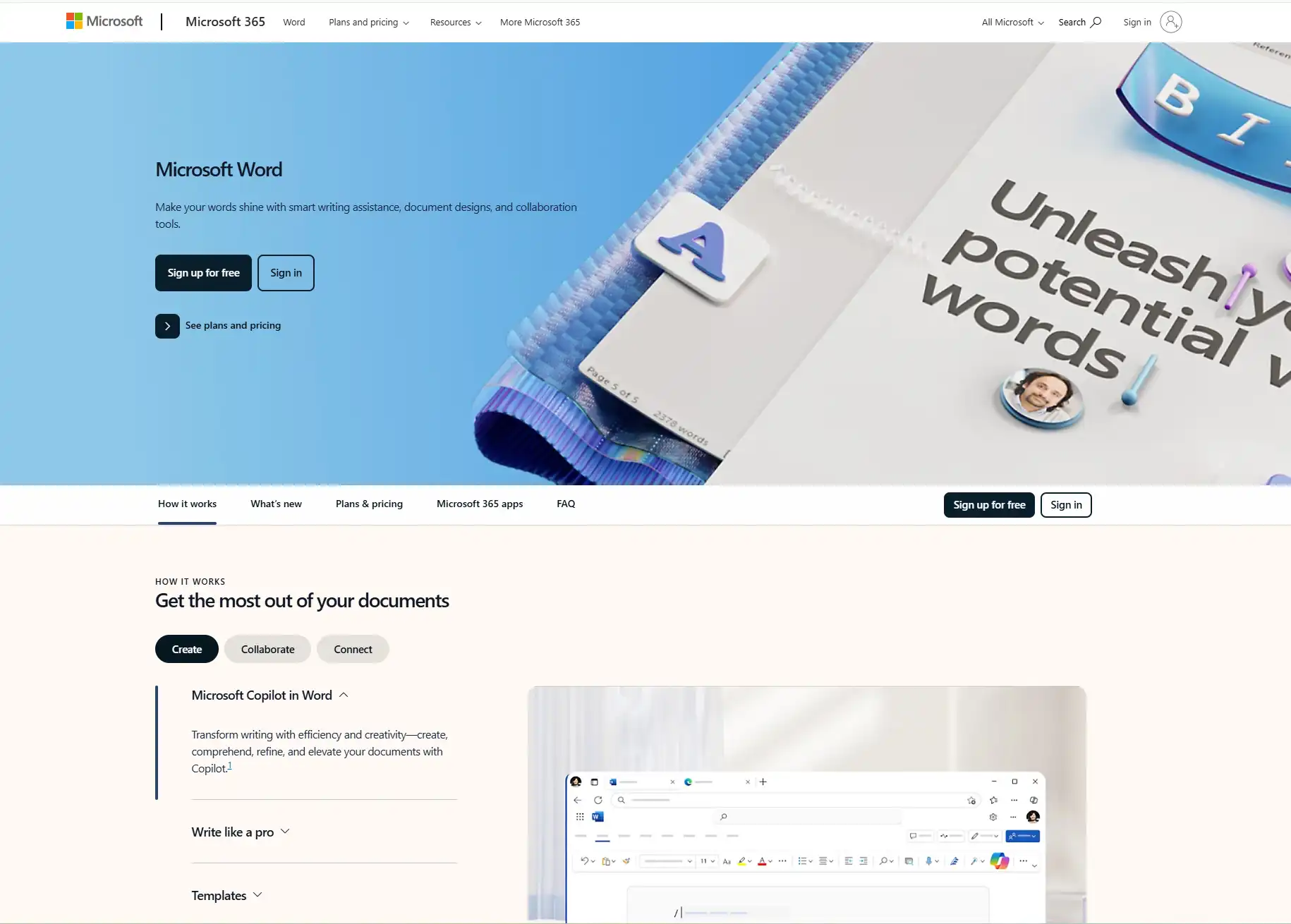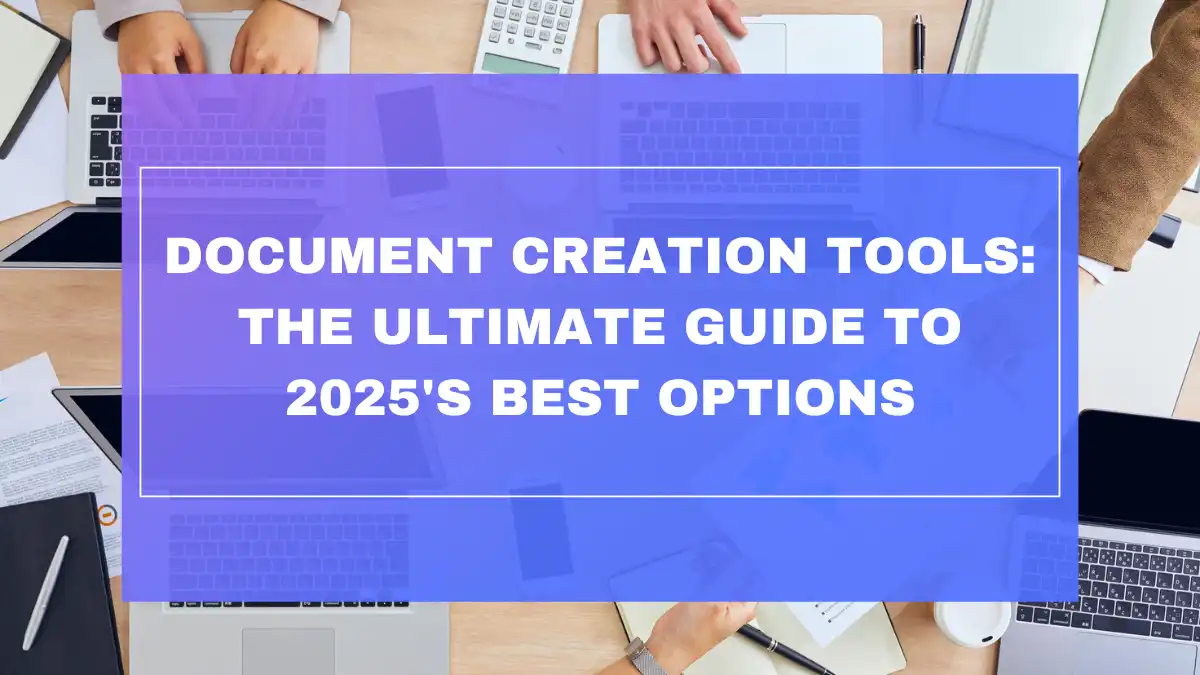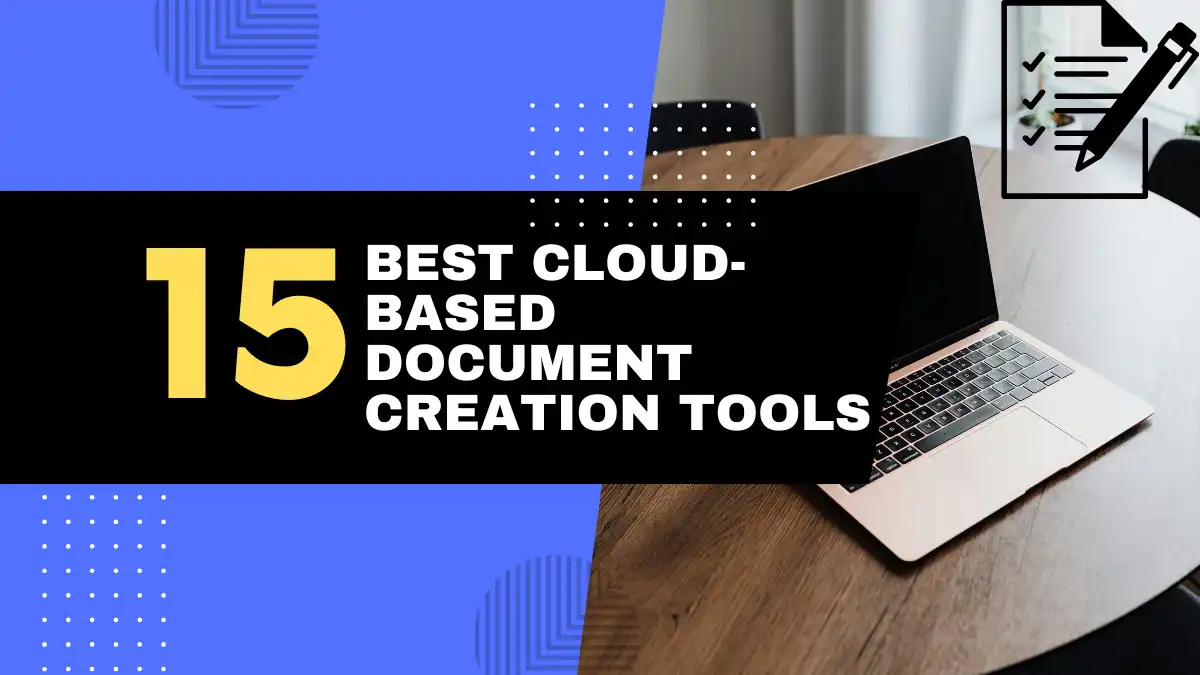
Introduction: Choosing the Right Document Creation Software in 2025
In today’s fast-paced digital workspace, staring at a blank document with a deadline looming can feel paralyzing. You need to create professional-looking reports, proposals, or presentations, but the old tools you’ve been using just aren’t cutting it anymore. If you’ve found yourself frustrated by limited formatting options, lack of collaboration features, or clunky interfaces, you’re not alone. Thousands of professionals are searching for better document creation solutions that can keep pace with the demands of the modern workplace.
The Evolving Landscape of Document Creation
Remember when creating documents meant Microsoft Word and not much else? Those days are firmly behind us. In 2025, document creation has evolved into a sophisticated ecosystem of specialized tools designed to address specific needs across industries and use cases.
The document creation landscape has undergone radical transformation over the past few years. Cloud-based solutions now dominate, AI-powered assistants help draft and edit content, and real-time collaboration has become not just possible but expected. With the rise of remote and hybrid work models, the ability to seamlessly create, share, and collaborate on documents from anywhere has moved from a nice-to-have to an absolute necessity.
“The right document creation software can increase team productivity by up to 40% and reduce document creation time by 60%,” according to the 2025 Workplace Productivity Report by Forrester Research.
Why Investing in the Best Document Creation Software is Crucial
The documents you create represent your professional brand – whether you’re an individual freelancer, a growing startup, or an established enterprise. Using outdated or inadequate tools can result in:
- Inconsistent formatting that looks unprofessional
- Wasted time on manual formatting and version control
- Collaboration bottlenecks that slow down projects
- Security vulnerabilities that put sensitive information at risk
- Difficulty scaling your document creation processes as your needs grow
In contrast, investing in quality document creation software delivers tangible benefits:
- Streamlined workflows that save valuable time
- Professional templates that ensure brand consistency
- Collaborative features that enhance team productivity
- Automation capabilities that reduce repetitive tasks
- Advanced security that protects sensitive information
- Scalability to grow with your changing needs
What Are You Really Looking For?
Before diving into specific recommendations, it’s worth considering what you’re actually searching for when looking for document creation software. Are you:
- A solo entrepreneur needing basic document tools on a budget?
- A small business wanting to create consistent, branded materials?
- A larger organization requiring enterprise-grade security and collaboration?
- A specialized professional needing industry-specific document capabilities?
- A team leader looking to improve document workflow efficiency?
Your specific needs will guide which features matter most and which software options align best with your requirements. As we move through this guide, keep your particular use case in mind to find the perfect match for your document creation needs.
Key Features to Consider in Top Document Creation Tools
Essential Features for Effective Document Creation
When evaluating document creation software, certain features serve as the foundation for productivity and effectiveness:
- Intuitive User Interface: Software should be easy to navigate with a reasonable learning curve.
- Rich Text Editing: Look for comprehensive formatting options including fonts, styles, colors, and layout controls.
- Templates and Presets: Quality templates save time and ensure consistent professional appearance.
- Collaboration Tools: Real-time editing, commenting, and version control are must-haves for team environments.
- Cloud Storage Integration: Seamless connection with storage platforms like Google Drive, Dropbox, or OneDrive.
- Mobile Compatibility: Access and edit documents on the go through responsive mobile apps.
- Export Options: The ability to save in multiple formats (PDF, DOCX, HTML, etc.) ensures compatibility.
- Security Features: Document protection, permissions management, and encryption protect sensitive information.
According to a 2025 survey by TechInsider, 87% of users identified these core features as “very important” or “essential” when choosing document creation software.
Nice-to-Have Features in Document Creation Software
Beyond the essentials, these advanced features can significantly enhance your document creation experience:
- AI-Powered Assistance: Smart suggestions for content, formatting, and error correction.
- Advanced Collaboration: Features like co-authoring, tracked changes, and approval workflows.
- Automation Tools: Templates with variables, document generation from databases, and workflow automation.
- Data Visualization: Built-in charts, graphs, and infographic creation tools.
- Integration Ecosystem: Connections with CRM, project management, and other business tools.
- Accessibility Features: Tools ensuring documents are accessible to users with disabilities.
- Analytics: Insights on document usage, reader engagement, and team productivity.
- Language Support: Multilingual capabilities including translation and localization features.
- Digital Signatures: Built-in e-signature functionality for contracts and formal documents.
- Content Management: Organized libraries, tagging systems, and search functionality.
These advanced features can transform document creation from a basic necessity to a strategic advantage for your workflow.
Top Free Document Creation Software Options in 2025
Overview of Free Document Creation Software
Free document creation tools have evolved significantly, now offering robust features that rival many paid options. These solutions provide excellent entry points for individuals, startups, and organizations with straightforward document needs.
The primary benefits of free document creation software include:
- Zero financial investment required
- Accessibility for users at all levels
- Sufficient functionality for basic document creation
- Easy onboarding for new team members
- No commitment required before upgrading to paid versions
However, free options typically come with limitations:
- Restricted premium features
- Limited storage capacity
- Fewer template options
- Potential watermarking
- Limited customer support
- Possible advertising
Free document creation tools are best suited for:
- Individual users with basic needs
- Students and educators
- Small startups with limited budgets
- Organizations testing different software options
- Occasional or low-volume document creators
Best Free Document Creation Tools – Option 1: Google Docs
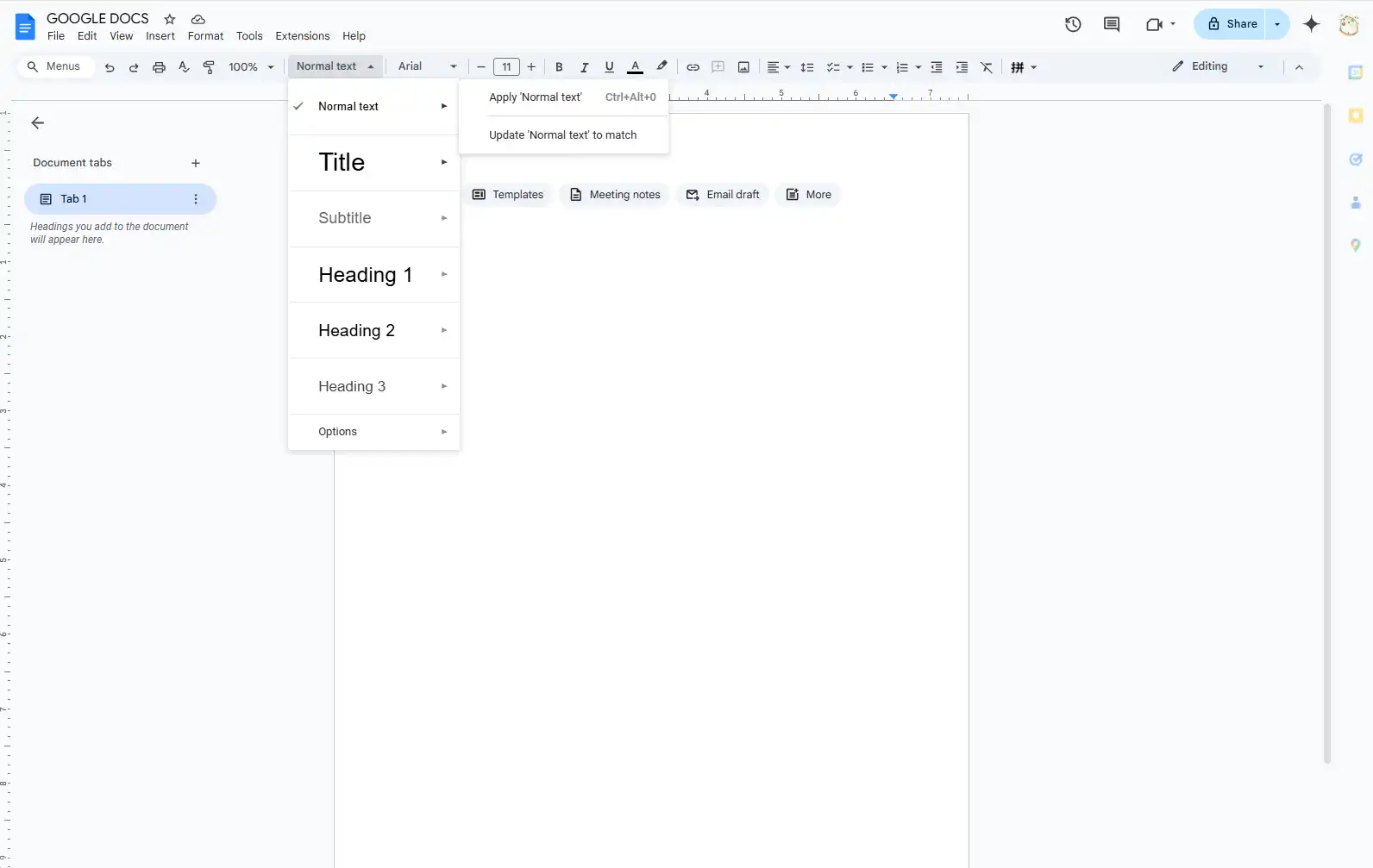
Key Features:
- Real-time collaboration with multiple users
- Automatic cloud saving to Google Drive
- Comprehensive formatting and styling options
- Voice typing capability with good accuracy
- Offline access and editing
- Extensive add-on marketplace
- Smart compose and editing suggestions
Pros:
- Exceptionally intuitive interface
- Seamless integration with Google ecosystem
- Excellent collaboration capabilities
- Regular updates and improvements
- Reliable cloud storage
- Strong mobile apps for Android and iOS
Cons:
- Limited advanced formatting compared to desktop solutions
- Some features require internet connectivity
- Less powerful than specialized software for complex documents
- Privacy concerns regarding Google’s data policies
Best Use Cases:
- Collaborative team writing projects
- Basic business documents (letters, memos, reports)
- Academic papers and research
- Shared documents requiring real-time editing
- Organizations already using Google Workspace
“According to a 2025 productivity survey, 78% of teams using Google Docs reported improved collaboration efficiency compared to their previous document solutions.”
Best Free Document Creation Tools – Option 2: LibreOffice Writer
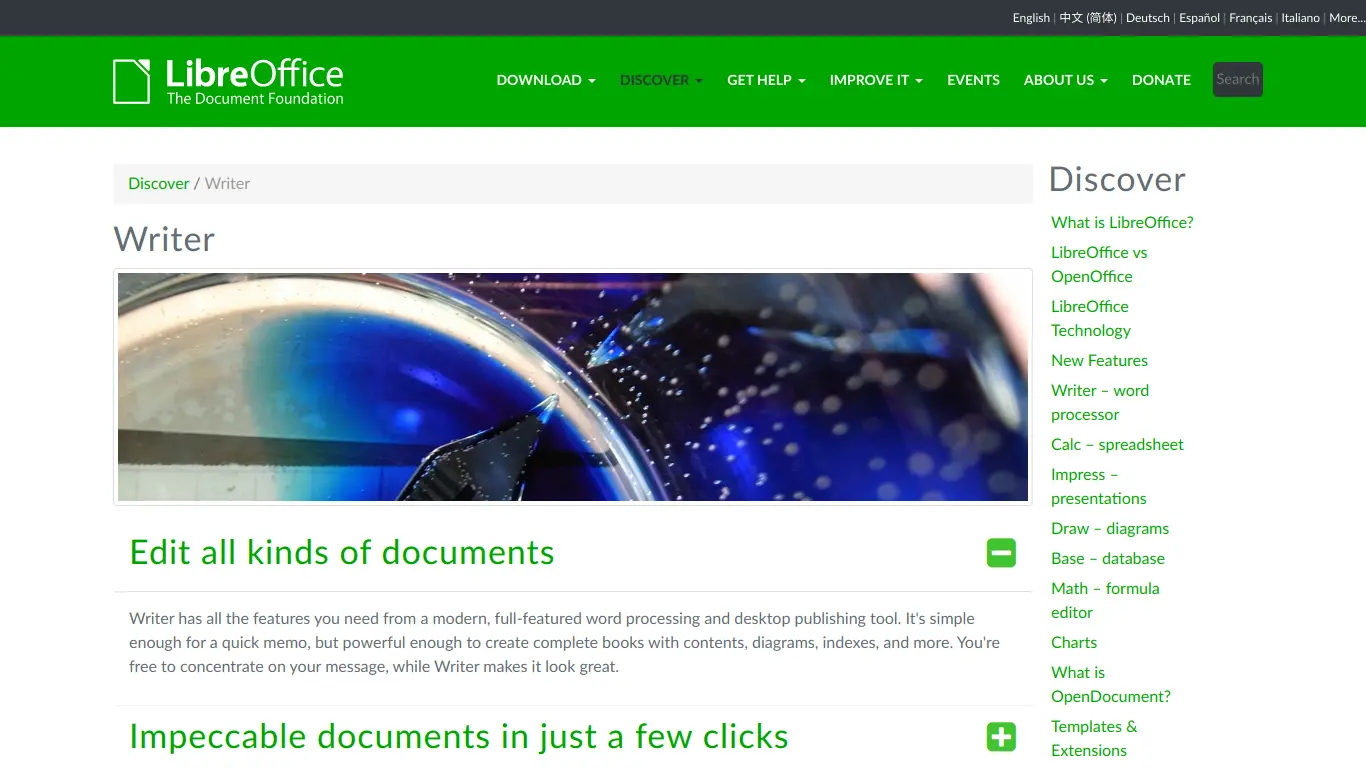
Key Features:
- Full-featured word processor with desktop-class capabilities
- Complete offline functionality
- Native file format compatibility with Microsoft Office
- Advanced document formatting options
- Extensions and template support
- Open-source with active development community
- No account required
Pros:
- Completely free and open-source
- Powerful formatting and layout capabilities
- No internet connection required
- Full desktop application experience
- No data collection or privacy concerns
- Regular updates from dedicated community
Cons:
- Less intuitive interface than cloud-based alternatives
- Limited real-time collaboration features
- Steeper learning curve for new users
- Less seamless cloud integration
- Mobile support not as robust as competitors
Best Use Cases:
- Users preferring traditional desktop applications
- Documents with complex formatting requirements
- Environments with limited internet connectivity
- Organizations with privacy or security concerns
- Users transitioning from Microsoft Office
- Academic and research documents
Best Free Document Creation Tools – Option 3: Notion
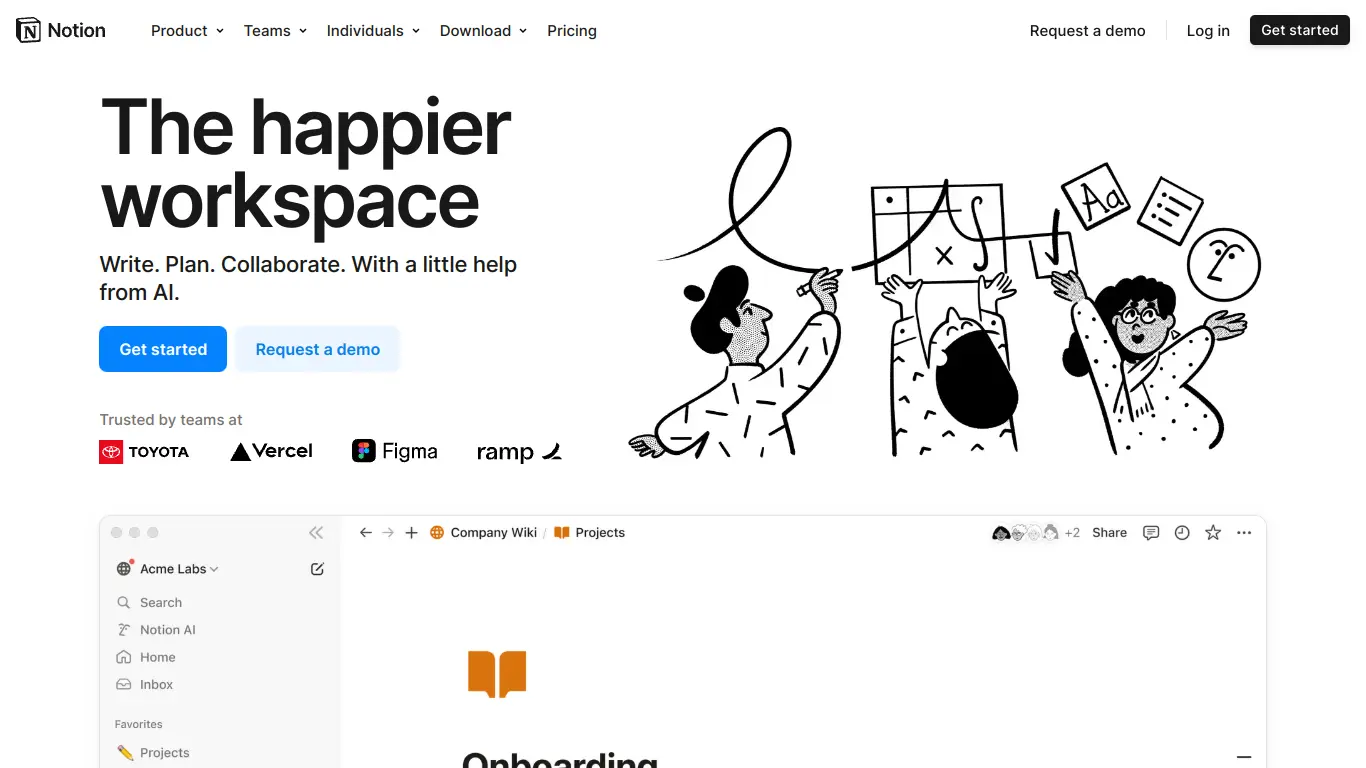
Key Features:
- Flexible document/wiki/database hybrid system
- Block-based content creation
- Powerful organization with pages and subpages
- Rich embedding capabilities for multimedia
- Collaborative editing and commenting
- Cross-platform availability
- Templates for various document types
Pros:
- Highly versatile for different document formats
- Modern, clean interface
- Excellent organizational capabilities
- Strong web clipper and content collection tools
- Growing template marketplace
- Robust free tier with generous limits
Cons:
- Different paradigm requiring adjustment for traditional document users
- Can become complex for simple document needs
- Limited offline capabilities in free version
- Some advanced features reserved for paid tiers
- Less traditional export options
Best Use Cases:
- Knowledge bases and internal documentation
- Project planning with embedded documents
- Research collection and organization
- Team wikis and process documentation
- Creative projects combining various content types
- Personal knowledge management
Comparison Table: Free Document Creation Software – Features & Limitations
| Feature | Google Docs | LibreOffice Writer | Notion |
|---|---|---|---|
| Platform | Cloud-based | Desktop | Hybrid |
| Real-time Collaboration | ⭐⭐⭐⭐⭐ | ⭐⭐ | ⭐⭐⭐⭐ |
| Offline Access | ⭐⭐⭐ | ⭐⭐⭐⭐⭐ | ⭐⭐ |
| Formatting Options | ⭐⭐⭐ | ⭐⭐⭐⭐⭐ | ⭐⭐⭐ |
| Templates | ⭐⭐⭐ | ⭐⭐⭐⭐ | ⭐⭐⭐⭐ |
| Learning Curve | ⭐⭐⭐⭐⭐ | ⭐⭐⭐ | ⭐⭐⭐ |
| Mobile Experience | ⭐⭐⭐⭐ | ⭐⭐ | ⭐⭐⭐⭐ |
| Integration | ⭐⭐⭐⭐ | ⭐⭐ | ⭐⭐⭐⭐ |
| Free Tier Limitations | Storage limits | None | Block limits |
| Best For | Collaboration | Traditional docs | Knowledge base |
Top Paid Document Creation Software Options in 2025
Overview of Paid Document Creation Software
Paid document creation software delivers enhanced functionality, support, and reliability for professionals with more demanding requirements. The investment typically provides substantial returns through improved productivity, capabilities, and support.
Key benefits of paid document creation tools include:
- Advanced formatting and design capabilities
- Premium templates and content libraries
- Enhanced collaboration and workflow features
- Priority technical support
- Higher security standards and compliance features
- Deeper integration with business systems
- Regular updates and feature enhancements
- Training resources and documentation
Paid document creation tools are best suited for:
- Businesses with regular document creation needs
- Teams requiring advanced collaboration features
- Organizations handling sensitive or regulated information
- Professionals creating client-facing documents
- Companies needing branded document solutions
- Users requiring specialized document formats
Top Document Creation Software – Option 1: Microsoft 365 (Word)
Key Features:
- Comprehensive word processing capabilities
- Rich formatting and design tools
- Real-time co-authoring
- Advanced templates and styles
- AI-powered assistance and editing
- Seamless integration across Microsoft ecosystem
- OneDrive cloud storage
- Windows, macOS, web, and mobile versions
Pricing Plans:
- Personal: $69.99/year for one user
- Family: $99.99/year for up to 6 users
- Business Basic: $6/user/month
- Business Standard: $12.50/user/month
- Business Premium: $22/user/month
Pros:
- Industry-standard document creation
- Powerful formatting and layout capabilities
- Strong collaboration tools
- Regular feature updates
- Extensive training resources available
- Excellent integration with other business tools
- Advanced security and compliance features
Cons:
- Higher cost compared to alternatives
- Can be feature-heavy for basic needs
- Some limitations in web version vs. desktop
- Requires subscription for full functionality
Best Use Cases:
- Enterprise document workflows
- Complex business documents and reports
- Organizations already invested in Microsoft ecosystem
- Industries with specific compliance requirements
- Teams transitioning from traditional office environments
- Legal and financial document creation
Top Document Creation Software – Option 2: Adobe Acrobat Pro DC
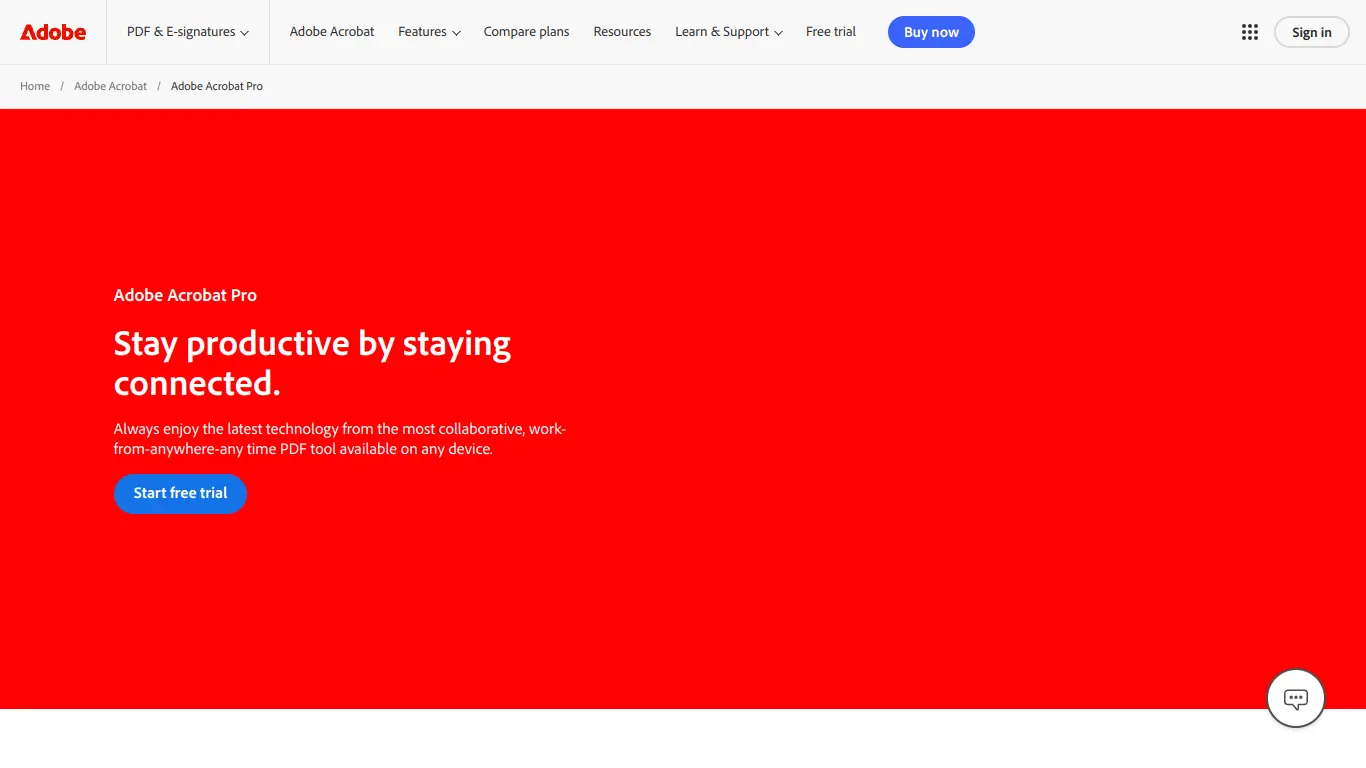
Key Features:
- PDF creation, editing, and management
- Document conversion between formats
- Electronic signatures and approvals
- Form creation and data collection
- Document protection and security
- OCR text recognition
- Cloud storage and synchronization
- Cross-platform accessibility
Pricing Plans:
- Acrobat Pro: $19.99/month (annual plan)
- Acrobat Teams: $16.99/license/month (minimum 10 licenses)
- Enterprise: Custom pricing
Pros:
- Industry-leader in PDF manipulation
- Comprehensive PDF editing capabilities
- Strong security and compliance features
- Electronic signature workflow
- Excellent form creation tools
- Integration with Adobe Creative Cloud
- Regular updates and improvements
Cons:
- Higher price point for single-purpose software
- Steeper learning curve for casual users
- Resource-intensive desktop application
- Some features locked behind higher tiers
Best Use Cases:
- Legal and contract document workflows
- Form-heavy business processes
- Regulated industries with compliance requirements
- Design-oriented businesses
- Organizations with document security concerns
- PDF-centric document ecosystems
Top Document Creation Software – Option 3: Coda

Key Features:
- Document-database hybrid platform
- Building-block approach to document creation
- Interactive elements and calculations
- Process automation and workflows
- Advanced collaboration with user permissions
- Customizable views of the same data
- Extensive template gallery
- API and integration capabilities
Pricing Plans:
- Free: Basic features with limitations
- Pro: $10/user/month (annual billing)
- Team: $30/user/month (annual billing)
- Enterprise: Custom pricing
Pros:
- Innovative approach to document creation
- Powerful data capabilities within documents
- Excellent for interactive content
- Strong automation features
- Flexible permissions and sharing
- Regular new feature releases
- Growing integration ecosystem
Cons:
- Different paradigm requires adjustment period
- Less suitable for traditional document needs
- Complex documents can become overwhelming
- Some advanced features have steep learning curve
- Premium pricing for team features
Best Use Cases:
- Team wikis and knowledge bases
- Project management with document components
- Process documentation and workflows
- Interactive reports and dashboards
- Teams seeking to consolidate tools
- Organizations with custom document needs
Top Document Creation Software – Option 4: Notion AI
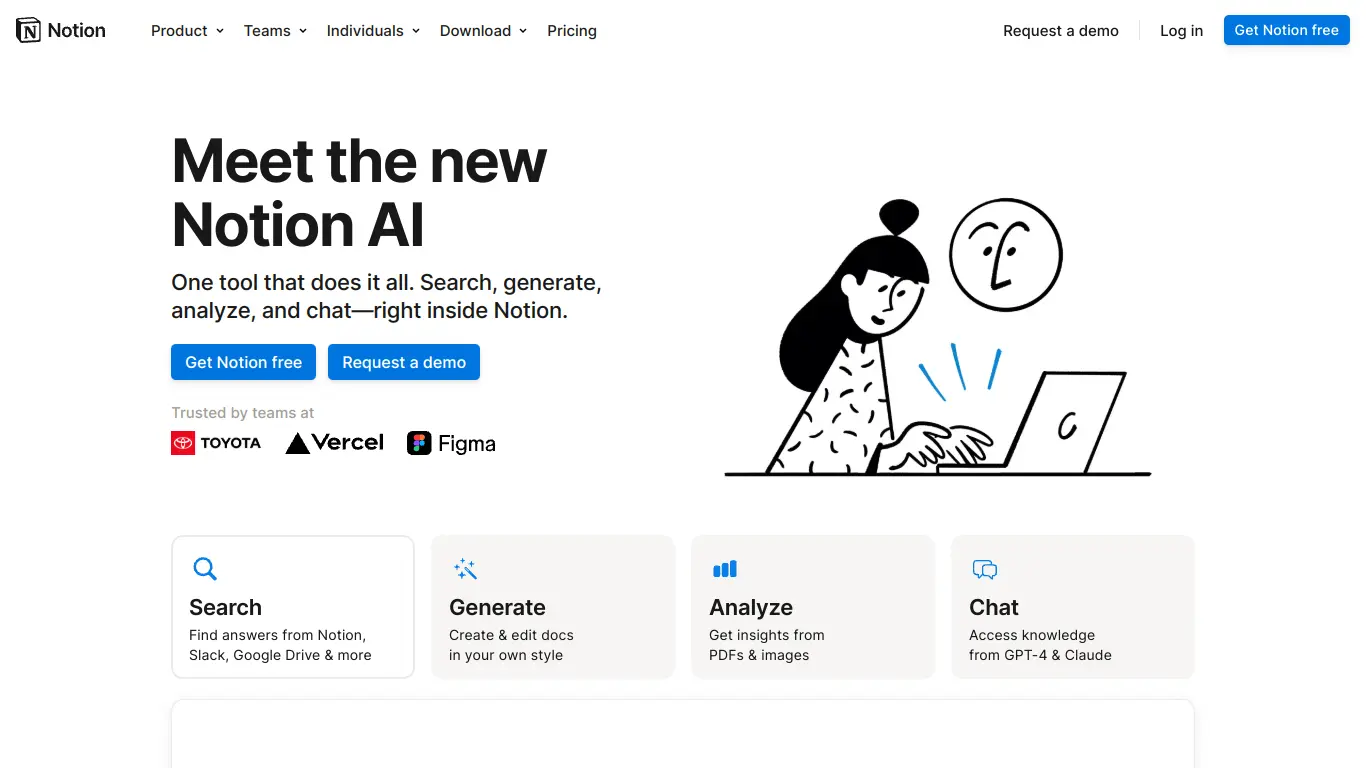
Key Features:
- AI-enhanced document creation
- Smart templates and structure suggestions
- Content generation and refinement
- Integrated knowledge base functionality
- Collaborative editing and permissions
- Cross-platform accessibility
- Database and document hybrid approach
- Advanced organization and linking
Pricing Plans:
- Plus: $8/user/month
- Business: $15/user/month
- Enterprise: Custom pricing
- Notion AI: $10/month add-on to any plan
Pros:
- Revolutionary AI assistance features
- Clean, modern interface
- Excellent organization capabilities
- Strong collaboration tools
- Regular feature improvements
- Flexible document structure
- Growing integration options
Cons:
- AI features require additional cost
- Different approach than traditional document tools
- Can become complex for simple needs
- Advanced features have learning curve
- Full power requires commitment to ecosystem
Best Use Cases:
- Content creation teams
- Knowledge-intensive organizations
- Research and development documents
- Project-based collaborative work
- Teams seeking to leverage AI in workflows
- Organizations consolidating multiple tools
Comparison Table: Paid Document Creation Software – Features, Pricing & More
| Feature | Microsoft 365 | Adobe Acrobat Pro | Coda | Notion AI |
|---|---|---|---|---|
| Core Strength | Comprehensive | PDF Specialist | Interactive | AI-Enhanced |
| Pricing (Basic) | $6/user/month | $19.99/month | $10/user/month | $8/user + $10 AI |
| Collaboration | ⭐⭐⭐⭐ | ⭐⭐⭐ | ⭐⭐⭐⭐⭐ | ⭐⭐⭐⭐⭐ |
| Templates | ⭐⭐⭐⭐⭐ | ⭐⭐⭐ | ⭐⭐⭐⭐ | ⭐⭐⭐⭐ |
| Formatting | ⭐⭐⭐⭐⭐ | ⭐⭐⭐⭐ | ⭐⭐⭐ | ⭐⭐⭐ |
| Security | ⭐⭐⭐⭐⭐ | ⭐⭐⭐⭐⭐ | ⭐⭐⭐⭐ | ⭐⭐⭐⭐ |
| Integrations | ⭐⭐⭐⭐⭐ | ⭐⭐⭐ | ⭐⭐⭐⭐ | ⭐⭐⭐⭐ |
| AI Features | ⭐⭐⭐⭐ | ⭐⭐⭐ | ⭐⭐⭐ | ⭐⭐⭐⭐⭐ |
| Mobile Experience | ⭐⭐⭐⭐ | ⭐⭐⭐ | ⭐⭐⭐⭐ | ⭐⭐⭐⭐ |
| Learning Curve | ⭐⭐⭐ | ⭐⭐ | ⭐⭐ | ⭐⭐⭐ |
| Best For | Enterprise | PDF Workflows | Interactive Docs | Knowledge Work |
Choosing the Best Document Creation Software for Your Specific Needs
Step-by-Step Guide to Selecting the Right Software
Finding the perfect document creation software doesn’t have to be overwhelming. Follow this methodical approach to identify the solution that aligns with your unique requirements.
1. Define Your Document Creation Needs and Goals
Start by clearly articulating what you need to accomplish:
- Document Types: What kinds of documents do you regularly create? (reports, proposals, contracts, presentations, etc.)
- Volume: How many documents do you create monthly?
- Complexity: Do you need basic text documents or complex layouts with interactive elements?
- Purpose: Are your documents internal or client-facing?
- Industry Requirements: Do you have specific compliance or regulatory needs?
📝 Pro Tip: Create a document journal for a week, noting every document you create and the features you needed. This provides concrete data for your decision.
2. Identify Must-Have Features vs. Nice-to-Have Features
Create two columns listing features that are:
Must-Have Features:
- Features without which your document workflow would break
- Capabilities essential to your specific industry or use case
- Functions that directly impact your productivity
Nice-to-Have Features:
- Additional capabilities that would improve but not transform your workflow
- Features you might grow into as your needs evolve
- Specialized tools for occasional use cases
3. Consider Your Budget (Free vs. Paid)
Evaluate the financial aspect realistically:
- Individual Users: Can you justify the cost based on time savings?
- Teams: Calculate the per-user cost against productivity gains
- ROI Consideration: Will paid features generate tangible returns?
- Scaling Costs: How will costs change as your team grows?
💡 Budget Insight: According to the 2025 Software Spending Report, companies that invest in quality document tools save an average of 5.3 hours per employee per week on document-related tasks.
4. Evaluate Team Size and Collaboration Requirements
Your collaboration needs significantly impact your software choice:
- Solo Users: May prioritize simplicity and efficiency over collaboration
- Small Teams: Need basic real-time editing and commenting
- Large Organizations: Require advanced permissions, workflows, and version control
- Remote Teams: Benefit from cloud-based solutions with strong mobile support
- Client Collaboration: May need external sharing with controlled access
5. Check for Integrations with Existing Tools
Document creation rarely happens in isolation:
- List all current software your team uses regularly
- Identify which integrations would streamline workflows
- Check if APIs are available for custom integrations
- Consider the entire document lifecycle (creation, review, storage, sharing)
6. Read User Reviews and Case Studies
Gather insights from others with similar needs:
- Focus on reviews from users in your industry
- Look for comments about long-term usage, not just initial impressions
- Pay attention to mentions of customer support quality
- Seek out case studies from organizations similar to yours
7. Take Advantage of Free Trials (where available)
Nothing replaces hands-on experience:
- Test at least 2-3 options that meet your criteria
- Create actual documents you typically work with
- Involve key team members in the evaluation process
- Document pros and cons during the trial period
🔍 Trial Tip: Create the same document in each platform you’re testing to directly compare the experience and results.
FAQs About Document Creation Software
What is Document Creation Software?
Document creation software refers to applications designed to help users create, edit, format, and share various types of digital documents. These tools range from basic text editors to comprehensive platforms with collaboration features, templates, and automation capabilities. Modern document creation software typically includes formatting tools, collaboration features, cloud storage, and integration with other business systems.
What are the benefits of using Document Creation Software?
Using dedicated document creation software offers numerous advantages:
- Efficiency: Templates and automation save significant time
- Professionalism: Consistent formatting and design elements
- Collaboration: Multiple team members can work together seamlessly
- Accessibility: Access documents from multiple devices and locations
- Security: Protect sensitive information with permission controls
- Organization: Centralized storage and document management
- Cost Savings: Reduce printing costs and physical storage needs
- Analytics: Track document usage and engagement in advanced systems
Is free document creation software sufficient for business use?
Free document creation software can be sufficient for some business uses, particularly for:
- Small businesses with basic document needs
- Startups with limited budgets
- Teams with straightforward collaboration requirements
- Organizations creating primarily internal documents
However, businesses should consider paid options when they need:
- Advanced security and compliance features
- Comprehensive branding and design capabilities
- Enhanced collaboration and workflow tools
- Dedicated customer support
- Deeper integration with business systems
- Specialized document types or formats
Many businesses start with free tools and migrate to paid options as their needs grow more complex.
What are the key features to look for in document creation software?
When evaluating document creation software, prioritize these essential features:
- User-friendly interface that minimizes learning curve
- Formatting capabilities aligned with your document complexity
- Collaboration tools matching your team’s workflow
- Template availability for your common document types
- Cloud storage and accessibility across devices
- Security features appropriate for your data sensitivity
- Integration capabilities with your existing tools
- Export options in formats your stakeholders need
- Revision history to track changes and restore previous versions
- Support quality matching your team’s technical expertise
How much does document creation software cost?
Document creation software pricing varies widely based on capabilities and target users:
- Free Options: Google Docs, LibreOffice, basic tiers of Notion and Coda
- Entry-Level Paid: $5-15 per user/month (individual professionals, small teams)
- Mid-Range Business: $15-30 per user/month (SMBs with advanced needs)
- Enterprise: $30+ per user/month or custom pricing (organizations requiring premium features, support, and security)
Many providers offer discounts for annual billing, educational institutions, and non-profits. Volume discounts are common for larger teams.
Can I collaborate with my team using document creation software?
Yes, most modern document creation software offers robust collaboration features, including:
- Real-time editing: Multiple users editing simultaneously
- Comments and suggestions: Feedback without changing the document
- Version history: Track changes and revert if needed
- User permissions: Control who can view, comment, or edit
- Notification systems: Alert team members to changes
- @mentions: Draw attention to specific sections or questions
- Approval workflows: Structured review processes (in premium tools)
The level of collaboration varies, with cloud-based solutions typically offering more seamless co-authoring than desktop applications.
What types of documents can I create with this software?
Modern document creation software supports a wide range of document types:
- Text Documents: Reports, proposals, letters, memos, policies
- Spreadsheets: Budgets, schedules, calculations, data analysis
- Presentations: Slideshows, pitch decks, training materials
- Forms: Surveys, applications, data collection tools
- PDFs: Professional documents with controlled formatting
- Web Pages: Simple websites or knowledge bases
- Rich Media Documents: Interactive content with embedded media
- Templates: Customizable starting points for common document types
Specialized industry documents (legal contracts, medical records, etc.) may require domain-specific software with appropriate compliance features.
Are there document creation tools that integrate with my CRM?
Yes, many document creation tools offer CRM integration to streamline workflows:
- Microsoft 365: Integrates with Dynamics, Salesforce, and others
- Google Workspace: Connects with most major CRMs through marketplace
- Notion: Offers API connections and third-party integrations
- Coda: Features native connections to popular CRMs
- PandaDoc: Specializes in CRM integration for document workflows
The depth of integration varies, from simple document linking to advanced features like:
- Auto-populating documents with CRM data
- Updating CRM records when documents change
- Tracking document engagement within the CRM
- Triggering CRM workflows based on document actions
Check with your specific CRM provider for recommended document integrations.
What are some top document creation software for beginners?
Beginners should consider these user-friendly document creation tools:
- Google Docs: Intuitive interface with familiar formatting tools
- Microsoft 365 Word: Comprehensive but with guided experiences
- Notion: Block-based editing with helpful templates
- Canva Documents: Visual-first approach with drag-and-drop simplicity
- Apple Pages: Clean interface with beautiful templates (Apple ecosystem)
Key features that benefit beginners include:
- Extensive template libraries
- Contextual help and tutorials
- Simplified interfaces with progressive disclosure
- Spelling and grammar assistance
- Predictable, consistent behaviors
- Good mobile experiences for on-the-go learning
Conclusion: Empowering Your Document Workflow with the Right Software
Recap of the Best Document Creation Software Options
After exploring both free and paid options, here’s a summary of the standout document creation software for 2025:
Top Free Options:
- Google Docs: Best for collaboration and cloud integration
- LibreOffice Writer: Ideal for traditional offline document creation
- Notion: Perfect for flexible, modern document organization
Top Paid Options:
- Microsoft 365: The comprehensive solution for professional environments
- Adobe Acrobat Pro DC: Specialized excellence for PDF-based workflows
- Coda: Interactive documents with database capabilities
- Notion AI: Knowledge-centric documents with AI assistance
Each solution offers unique strengths that align with different document creation needs. The best choice depends entirely on your specific requirements, workflow, and budget constraints.
Final Thoughts on Optimizing Document Creation in 2025
As we move through 2025, document creation continues to evolve beyond simple text editing into integrated workflows that connect content, data, and collaboration. The most successful organizations are those that view document creation as a strategic process rather than just an administrative task.
Consider these key trends shaping document creation:
- AI assistance is becoming indispensable for drafting, editing, and formatting
- Interactive documents are replacing static files for better engagement
- Cross-platform accessibility is now essential for remote and hybrid teams
- Integration capabilities determine how smoothly documents fit into workflows
- Security and compliance features are non-negotiable for sensitive information
Remember that the “best” software is ultimately the one that removes friction from your specific document workflows. Sometimes a simpler tool that perfectly matches your needs is better than a feature-rich platform that adds complexity.
What’s Your Go-To Document Creation Tool?
We’ve covered a comprehensive range of document creation software, but everyone’s experience is different. What document creation tools have transformed your workflow? Have you discovered clever ways to use these platforms that others might benefit from?
Share your experiences in the comments below! Which features have proven most valuable? What challenges have you overcome with your document creation software? Your insights could help others find their perfect document solution.
Looking for more comprehensive information? Check out : Document Creation Tools: The Ultimate Guide to 2025’s Best Options for an even deeper dive into the world of document creation software, including industry-specific recommendations, advanced tutorials, and expert interviews.

